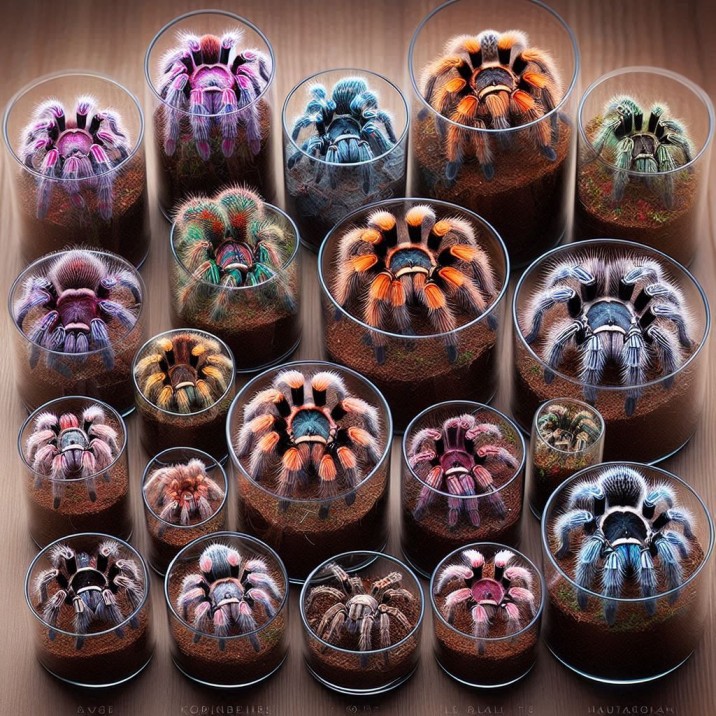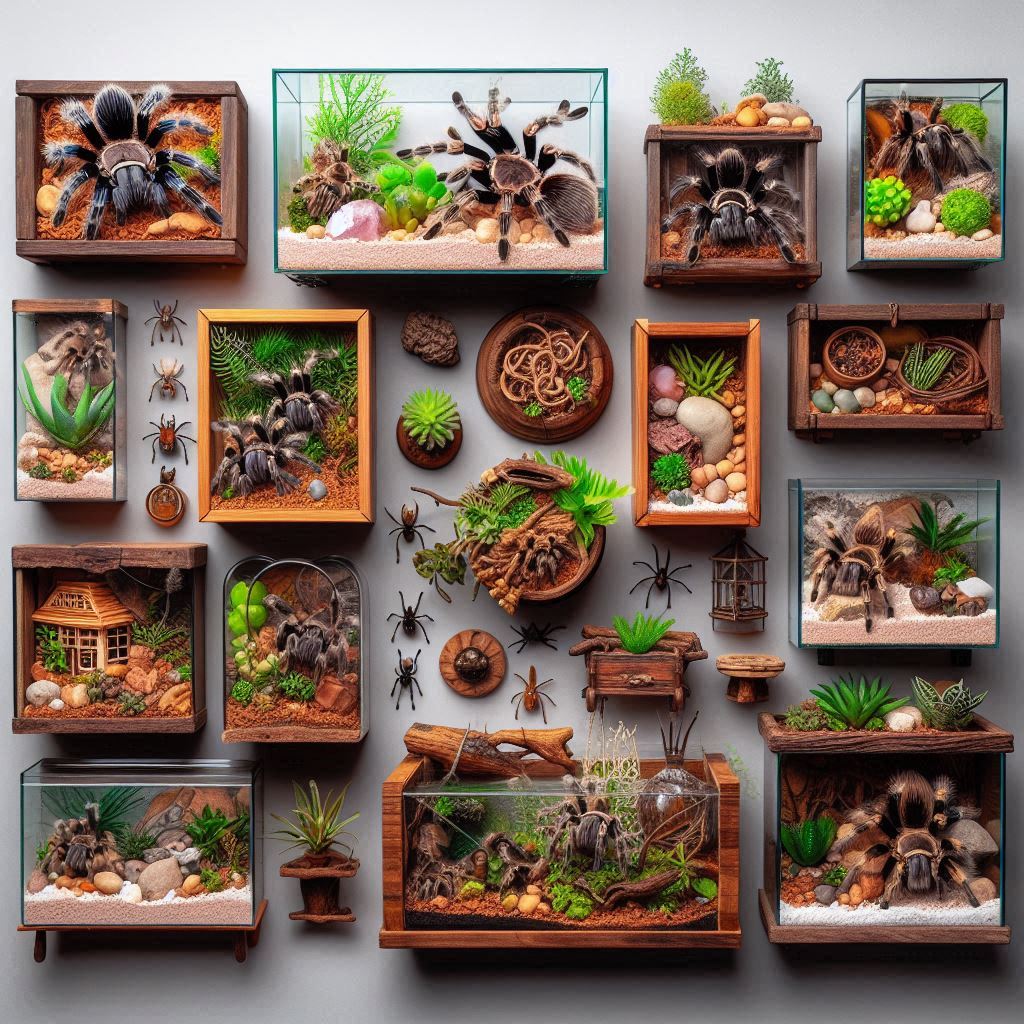Introduction
Table of Contents
Tarantulas are fascinating creatures that many people love to keep as pets. However, one of the most important aspects of caring for a tarantula is ensuring that it has the right enclosure size. This guide will help you understand everything you need to know about creating the perfect home for your eight-legged friend. Whether you are a beginner or an experienced tarantula owner, this article will provide you with valuable insights to keep your tarantula happy and healthy.

Why Tarantula Enclosure Size Matters
Importance of Space
Tarantulas need enough space to move around, hunt, and feel comfortable. A cramped enclosure can lead to stress and health problems.
Preventing Escapes
A properly sized enclosure helps prevent your tarantula from escaping. Tarantulas are skilled climbers and can squeeze through small gaps.
Mimicking Natural Habitat
Providing an enclosure that mimics the tarantula’s natural habitat is crucial. It helps the tarantula feel secure and behave naturally.
How to Choose the Right Tarantula Enclosure Size
Understanding Tarantula Species
Different species of tarantulas have different needs. For instance, an arboreal tarantula (tree-dwelling) will require a taller enclosure, while a terrestrial tarantula (ground-dwelling) will need more floor space.
General Guidelines for Enclosure Size
- Small Tarantulas (up to 3 inches): Enclosure size should be at least 12″x12″x12″.
- Medium Tarantulas (4-6 inches): Enclosure size should be at least 18″x18″x18″.
- Large Tarantulas (7 inches and above): Enclosure size should be at least 24″x24″x24″.
Customizing the Tarantula Enclosure Size
You can customize the enclosure with hiding spots, climbing branches, and burrowing areas to cater to your tarantula’s specific needs.
Setting Up the Perfect Enclosure
Enclosure Types
- Glass Tanks: Great for visibility but need secure lids.
- Plastic Containers: Lightweight and easy to modify.
- Custom-built Enclosures: Tailored to specific needs but can be expensive.
Substrate
Choose a substrate that holds moisture well but does not get moldy. Coconut fiber, peat moss, and vermiculite are good options.
Temperature and Humidity
Maintain the temperature between 70-85°F and humidity levels between 60-80% depending on the species.
Hiding Spots
Provide at least one hiding spot for your tarantula to retreat to. Cork bark, coconut shells, and plastic hides work well.
Climbing and Burrowing Areas
Arboreal species need vertical climbing spaces, while terrestrial species appreciate deep substrates for burrowing.
Common Mistakes to Avoid
Overcrowding the Enclosure
Avoid putting too many decorations or hides, which can reduce the available space for your tarantula.
Incorrect Substrate Depth
Ensure the substrate is deep enough for burrowing species to dig.
Ignoring Ventilation
Proper ventilation is essential to prevent mold and ensure a healthy environment for your tarantula.
Maintaining the Enclosure
Regular Cleaning
Clean the enclosure regularly to remove any uneaten food, waste, and mold.
Monitoring Conditions
Regularly check the temperature and humidity levels to ensure they remain within the optimal range.
Health Checks
Observe your tarantula for any signs of stress or illness, such as lethargy, refusal to eat, or abnormal behavior.
Table of Information
| Tarantula Size | Recommended Enclosure Size |
|---|---|
| Small (up to 3 inches) | 12″x12″x12″ |
| Medium (4-6 inches) | 18″x18″x18″ |
| Large (7 inches and above) | 24″x24″x24″ |
Conclusion
Ensuring your tarantula has the right enclosure size is crucial for its health and well-being. By understanding your tarantula’s specific needs and following the guidelines provided in this article, you can create a comfortable and secure home for your pet. Happy tarantula keeping!
FAQs about Tarantula Enclosure Size
- How often should I clean my tarantula’s enclosure? Clean your tarantula’s enclosure every 1-2 weeks, depending on the size and waste accumulation.
- Can I use sand as a substrate for my tarantula? No, sand is not suitable as it does not hold moisture well and can cause impaction.
- How can I maintain the humidity in my tarantula’s enclosure? Use a moisture-retaining substrate and mist the enclosure regularly.
- Do tarantulas need a lot of light? No, tarantulas prefer dim lighting. Avoid placing the enclosure in direct sunlight.
- Can I keep multiple tarantulas in the same enclosure? It’s not recommended as tarantulas are solitary creatures and can become aggressive towards each other.

